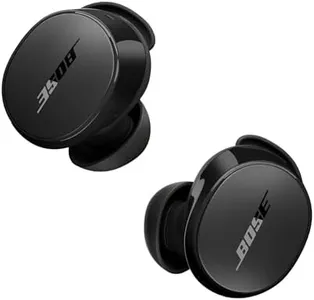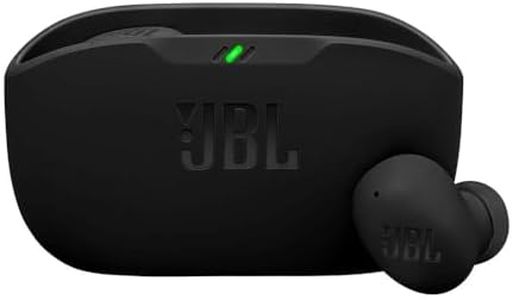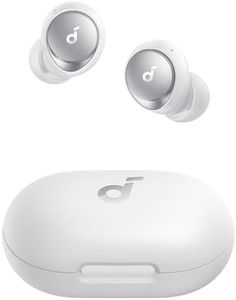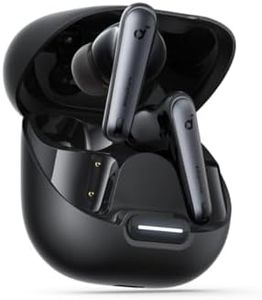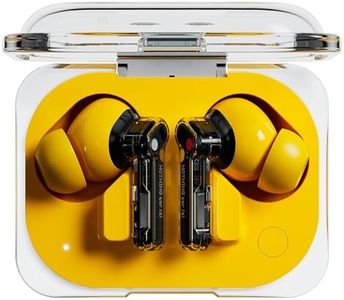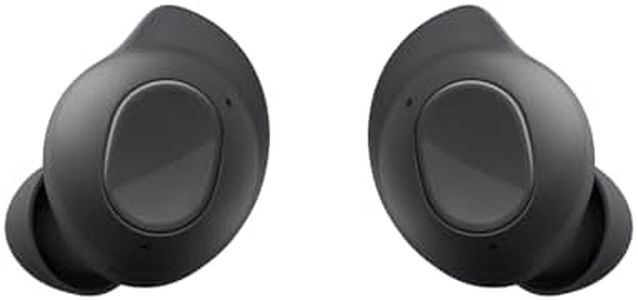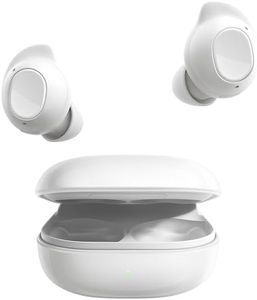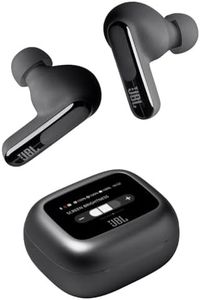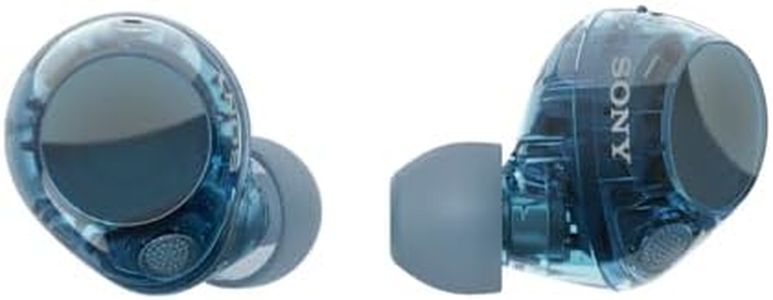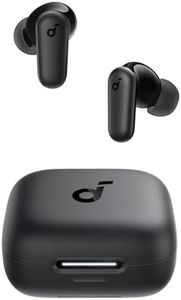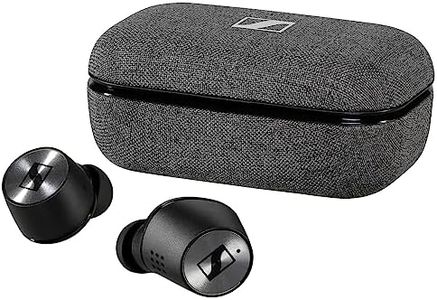We Use CookiesWe use cookies to enhance the security, performance,
functionality and for analytical and promotional activities. By continuing to browse this site you
are agreeing to our privacy policy
10 Best In Ear Noise Cancelling Headphones
From leading brands and best sellers available on the web.Buying Guide for the Best In Ear Noise Cancelling Headphones
When shopping for in-ear noise-cancelling headphones, understanding your own needs and preferences is crucial. These headphones are designed to help you enjoy your music, podcasts, or calls without being distracted by outside noise, all in a small, portable form. To get the best fit for you, think about how and where you'll use them—whether that's during commutes, workouts, flights, or at your desk. Comfort, sound quality, and how effectively they cancel noise should all play a part in your decision-making. Let’s go over the key specs you’ll want to understand before you buy.Noise Cancellation TypeThis spec refers to how the headphones block out external noise. There are two main types: active noise cancellation (ANC), which uses electronic signals to cancel out sounds, and passive noise isolation, which relies on the fit and materials to block noise physically. ANC is generally more effective at reducing constant background sounds like engine hums, while passive isolation works well for blocking out sudden, sharp noises. If you’re in very noisy environments like airplanes or public transport, prioritize strong ANC. For quieter settings or if you’re sensitive to the pressure feeling ANC can cause, passive isolation might be enough.
Fit and ComfortThis is about how the earbuds sit in your ears and how comfortable they feel during long listening sessions. Fit is affected by the earbud shape and the type and size of ear tips provided. A secure fit not only ensures comfort but also helps block out noise better. Some models come with different tip sizes or specialty tips for sports use. For all-day wear or intense activities, look for lightweight designs and multiple ear tip options to find the most comfortable match for your ear shape.
Battery LifeBattery life tells you how long the headphones can be used between charges, both for the earbuds alone and with the charging case. This spec is especially important for wireless noise-cancelling models, as ANC features can consume more power. Earbuds range from a few hours to over a day of listening when you include the charging case. If you use headphones for long commutes or travel, opt for longer battery life; if you only use them briefly or have easy access to charging, shorter battery life might be acceptable.
Sound QualitySound quality refers to how good your music and calls sound through the headphones, considering clarity, bass, treble, and balance. Some people prefer a bass-heavy sound for certain music genres, while others want more balanced or natural sound for podcasts and calls. Pay attention to reviews or try out headphones if possible to judge if the sound matches your preferences. If audio accuracy matters most—for example, for audiophiles—look for models that are well-reviewed for their audio performance.
Controls and Smart FeaturesThis spec covers how you control playback, adjust noise cancellation, or access smart assistants using buttons, touch sensors, or voice commands on the earbuds. Some models offer customizable controls, transparency (or 'ambient') mode to let in outside sounds, and integration with virtual assistants. If you value convenience and multitasking, prioritize intuitive controls and useful smart features. For a simple, straightforward listening experience, basic buttons may be sufficient.
Connectivity and CompatibilityThis refers to how your headphones connect to your devices, usually via Bluetooth, and whether they support features like quick pairing, multipoint (connecting to more than one device at a time), or high-quality codecs for better sound. Make sure the headphones are compatible with your primary devices—such as your smartphone, laptop, or tablet—and check for easy pairing if you switch devices often. If you listen to high-resolution audio or want to reduce lag in videos, codec support becomes more important.
Water and Sweat ResistanceWater or sweat resistance means the earbuds can handle moisture, which is important if you plan to use them for workouts or in rainy weather. This is usually indicated by an IP rating (like IPX4 or IPX7), with higher numbers offering better protection. For everyday indoor use, basic water resistance may be enough; for exercise or outdoor use, look for higher ratings to ensure durability.
